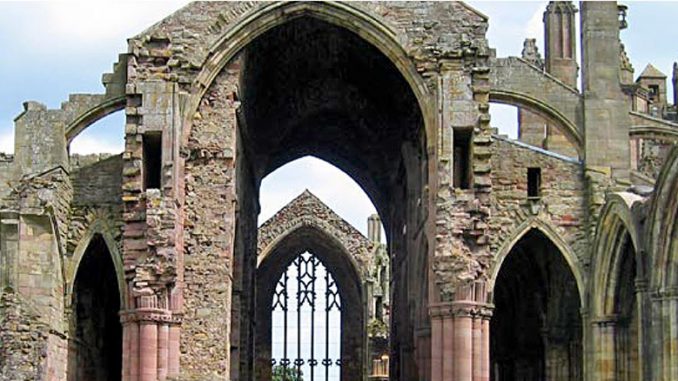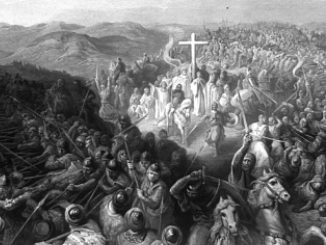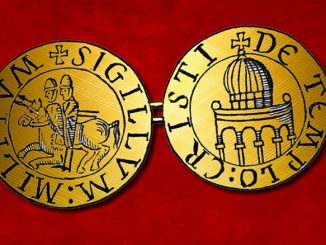
Above: The Cistercians built Melrose Abbey: JeremyA under CC BY-SA 2.5
The Knights Templar are known to history as the warrior monks, but what is not as commonly known is the kinship the Order shared with the Cistercians, the true and original white-mantled monks.
On March 21st, 1098 just a year before the Crusaders would storm over the wall of Jerusalem, a Benedictine monk by the name of Robert of Molesme led twenty-one of his followers to the inhospitable brush and mud of Citeaux where he would set up a new abbey.
The reasoning behind the move was that Robert was fed up with how the Benedictines were not observing the rule of St. Benedict, which the Templar Rule of Order would latterly be based upon. He believed that by setting up in a secluded wilderness he could begin with a fresh slate so to speak. The monks of his former abbey at Molesme were unhappy with his departure and begged the Pope to make him return which he did, being replaced at Citeaux by Alberic.
Many claim it was Alberic who is responsible for the White Mantle of the Cistercians, but it is more likely to have been his successor, the English Abbott Stephen Harding. Whether Harding is responsible for the white robes that would ultimately distinguish the Cistercians and latterly the Templars form all other monastic institutions or not is of little importance. Harding’s most notable contribution to the cause came when he accepted a young man from Fontaines named Bernard who came to the abbey with thirty of his relatives seeking membership in the order.
Bernard would soon rise in the eyes of the order of monasticism and soon set up his own abbey at Clairvaux. The land was, like so many of the Cistercian abbeys that followed granted by Burgundian Nobles. In fact no less a noble than Hugh Count of Champagne, who would eventually become a member of the Templars.
The young Abbott Bernard was instrumental in not only in preparing the rule of order for this new order of knighthood, but also through his letter to friend Hugues de Payens, propelling the order to incredible heights as we examine in another section of this web site.
Almost in unison with the Templars, the Cistercians grew in wealth. Like the Templars the Cistercian order was free of taxes and tithes and were expert at all manner of farming, industry and commerce. Lead for the Abbey roofs were mined in their own mines and smelted in their own facilities.
It is a shame that these roofs do not exist today in England as Henry VIII had them all melted down for his own usage many years later.
The construction of the Abbeys is a marvel to behold, for in a day when fresh water was a concern, the Cistercians had plenty. They always sought out locations that were secluded and on a running river or stream. The monks would dam sections to create enough flow to carry water to every portion of the Abbey. Water would flow through kitchens, to basins for washing and they even had indoor plumbing where waste would drop into the river and be carried away from the Abbey. But as complex as their system of water and waste management was, the order was simple to the core when it came to ornamentation. In a day when their Benedictine rivals had altars and candles of gold, the Cistercians opted for plain cloth on the altar and a simple wooden Cross on it. No gold of any kind was found in the Abbey although the order soon grew rich enough to have all they wanted.
So rich were the Cistercians that they gave a year’s supply of wool as a means to finance the ransom of King Richard I, who was captive in Germany.
The connection with the Templars is not merely one of coincidence. The very rule of the Templar order held this monastic institution in highest regard and there is no doubt of the many cooperative ventures between the two. For example, if a knight was expelled from the order, he did not merely rejoin a secular life. The knight was required to seek shelter in a Cistercian monastery in the hopes that he could be rehabilitated. In fact one Templar Master who quit the order sought shelter in the cloisters of the Cistercians and lived out the balance of his life there.
About Us
TemplarHistory.com was started in the fall of 1997 by Stephen Dafoe, a Canadian author who has written several books on the Templars and related subjects.
Read more from our Templar History Archives – Templar History



